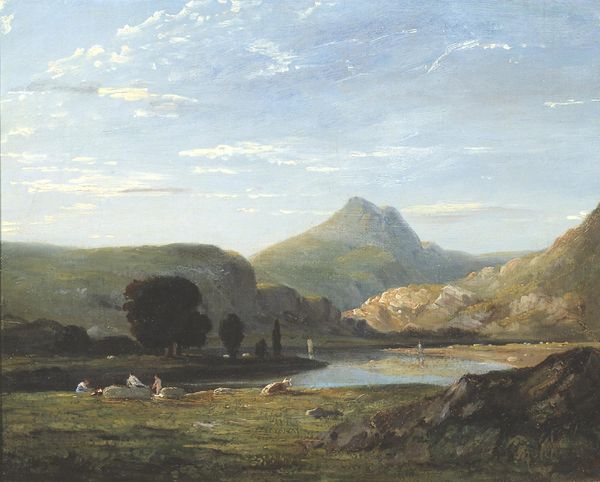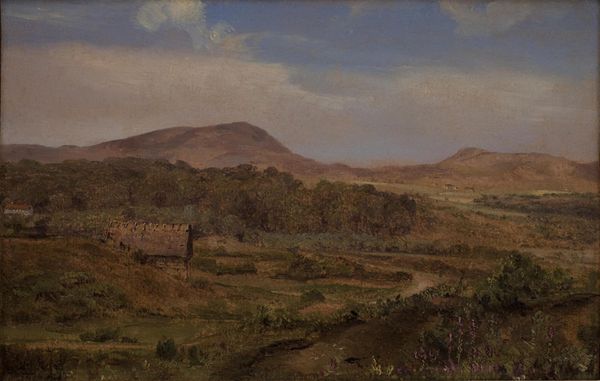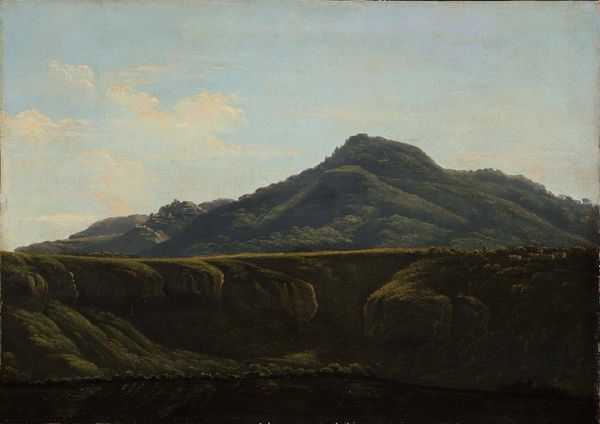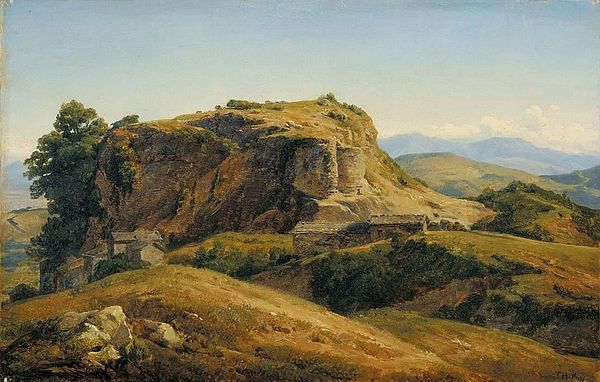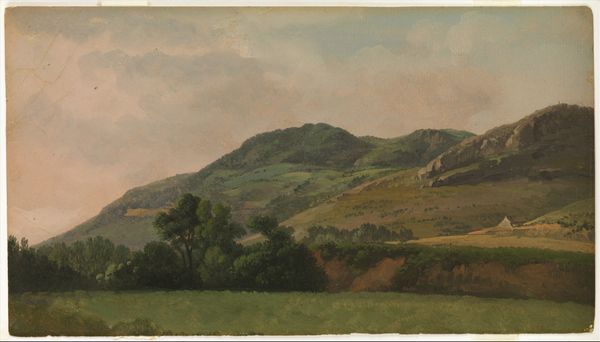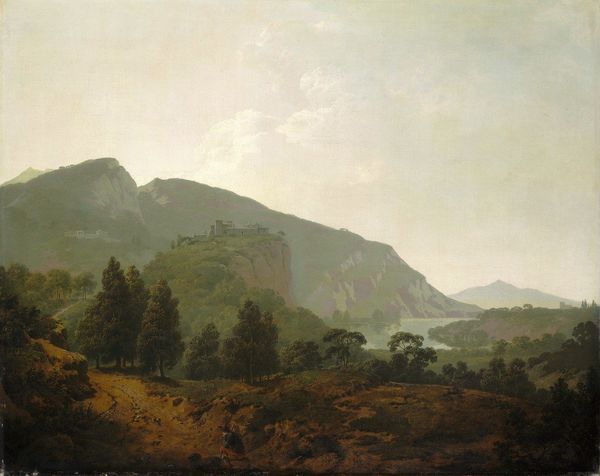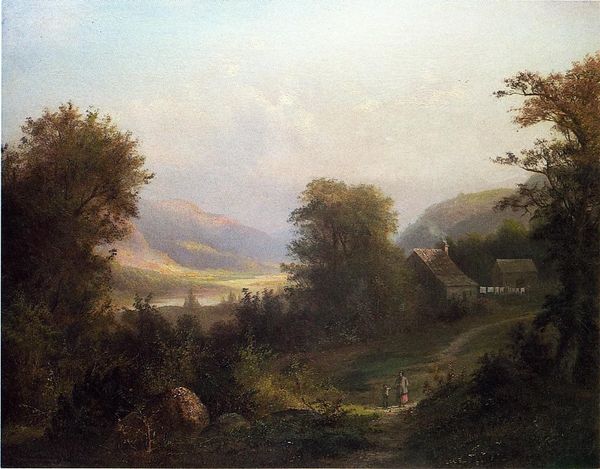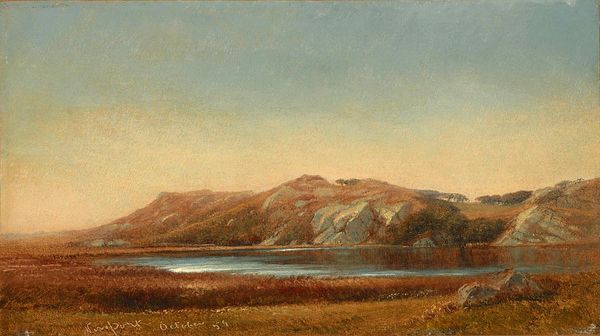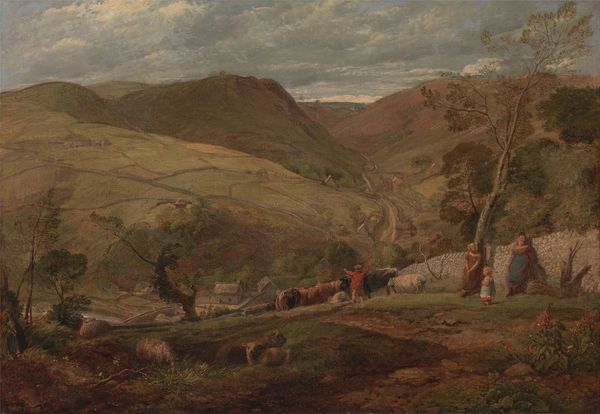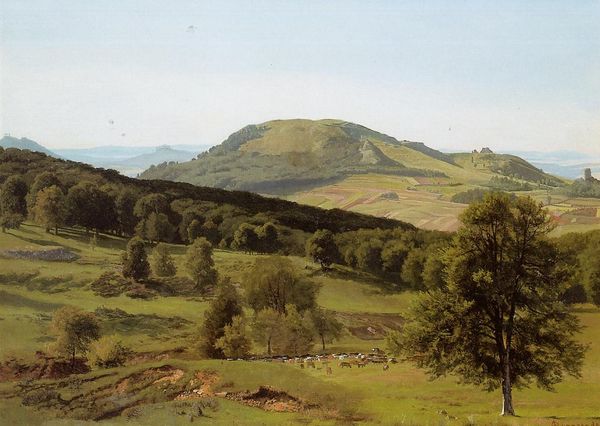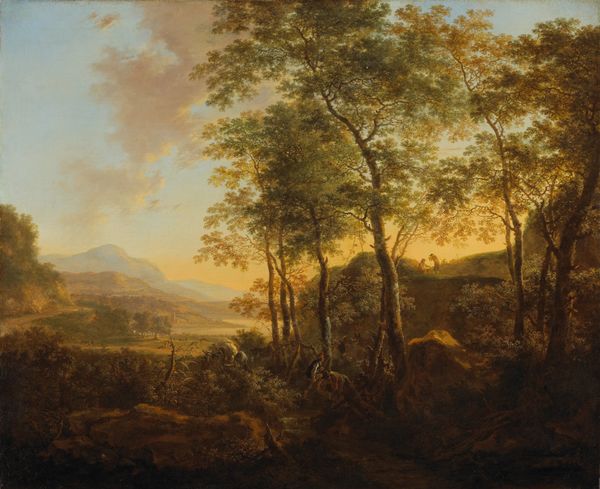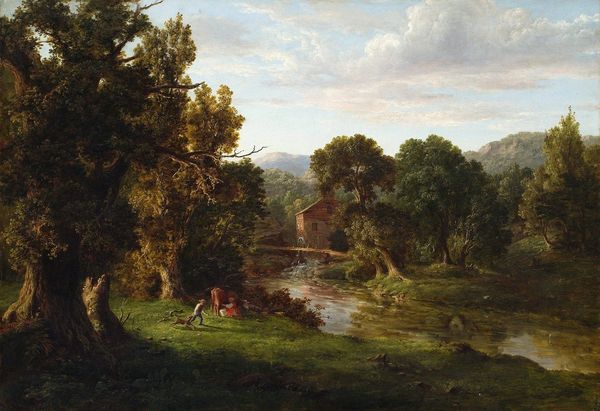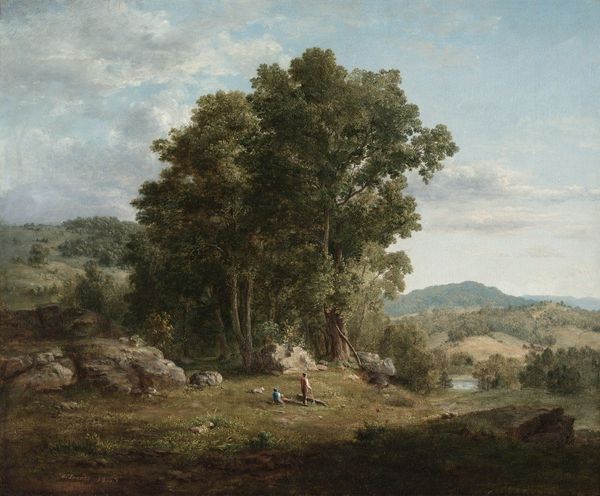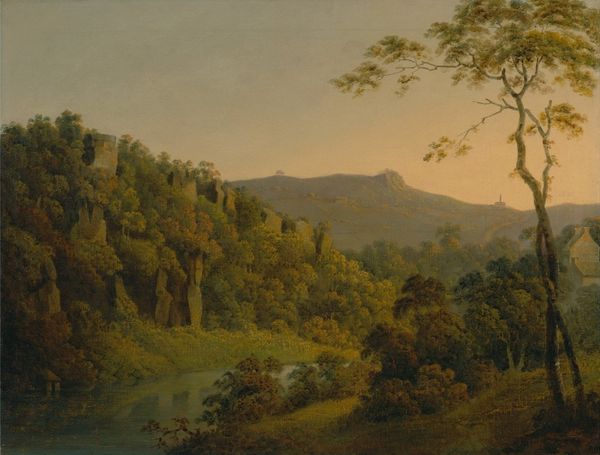
Dimensions: 42 x 62 cm
Copyright: Public domain
Curator: "Landscape," painted by Knud Baade in 1864. Just feast your eyes on that subdued light. What strikes you most when you look at it? Editor: Hmm, initially I get this profound sense of stillness, a kind of expectant hush. It almost feels like the world is holding its breath. But, of course, it’s the calm before an imperial storm. The light in these landscapes is not merely decorative; it is deeply entangled with structures of power and ownership of the time. Curator: Stormy skies aside, there is an intriguing calm to it, as you say. Perhaps it's Baade's brushwork. He uses these gentle daubs of color to evoke such a palpable quiet, particularly reflected on that lake’s surface. And just look how the figures sort of blend into the land there. A kind of serene naturalism. It seems inviting somehow... until I think about those underlying political issues! Editor: That "serene naturalism" can blind us to the way landscapes function within nationalist imaginaries, though. The painting invites us into a pristine scene of supposed untouched land but conveniently leaves out any conversations about Indigenous dispossession and labor. Think of the material conditions of nineteenth-century European settlement. The “naturalistic tone” normalizes nature as apolitical, silencing narratives of class, identity, and exploitation that underpinned those settings. Curator: That's a potent reminder that even idyllic images carry layered histories within them, though, in Baade's defense, it may just be that, at his core, he was looking at that landscape and wanting to translate how it affected him onto the canvas. You can get so swept away standing in these wide-open places that history might easily vanish momentarily. Editor: True, Baade’s personal feelings cannot be discounted, nor the romantic elements influencing his process! Still, by critically interrogating his compositional and stylistic choices—what he decided to include, and more importantly, exclude—we get a more comprehensive picture of 19th-century power relations that seeped even into something as seemingly simple as the “naturalistic tone” of an oil painting. Curator: Absolutely. I suppose we shouldn't always trust the landscapes at face value. It's like they're beautiful coded messages. There's the calm, the skill, and also this unspoken commentary on culture all blended up! Editor: Precisely, a beautiful piece that shows how a landscape can prompt crucial discussions of space, power, and identity.
Comments
No comments
Be the first to comment and join the conversation on the ultimate creative platform.
